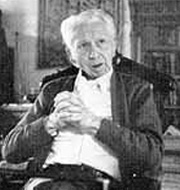Samuel W. Taylor: Mormon Author
Samuel W. Taylor was a novelist, scriptwriter, and historian. He was a member of The Church of Jesus Christ of Latter-day Saints.
Taylor, a grandson of Church president John Taylor, was born on February 5, 1907, two years after his father, John W. Taylor, resigned from the Quorum of the Twelve Apostles in protest over the Church’s official denouncement and abandonment of plural marriage or polygamy. His father had six wives and was excommunicated in 1911. Consequently, Taylor’s upbringing was unusual, with thirty-five siblings, a father who left the Church, and a grandfather who was a prophet.
Taylor was a gifted writer. He attended Brigham Young University where he studied journalism and wrote for the student newspaper. He penned a weekly column called “Taylored Topics” and was known for his wit. He often wrote news stories or columns that alarmed the university administration and resulted in his suspension. By the time he dropped out, he had published articles in national magazines. He then moved to California.
He wrote in many genres, including fiction, nonfiction, humor, and criticism. His short story, “A Situation of Gravity,” was the inspiration for Disney’s The Absent-Minded Professor, the sequel Son of Flubber, and the remake, Flubber. The 1942 film The Man Who Returned to Life was based on one of his stories. The 1951 film The Man with My Face was based on his novel of the same name. He was the screenwriter for the 1954 film Bait.
He wrote a number of biographies and Mormon histories, including The Kingdom or Nothing, a biography of his grandfather John Taylor (republished as The Last Pioneer in 1999). His writings reflect his quick wit as well as his dissident perceptions and criticisms about the history of the Church. He often published in Sunstone and Dialogue: A Journal of Mormon Thought. The Association for Mormon Letters awarded him an honorary lifetime membership in 1994.
He married Gay Dimick and they made their home in Redwood City, California. He died on September 26, 1997.
